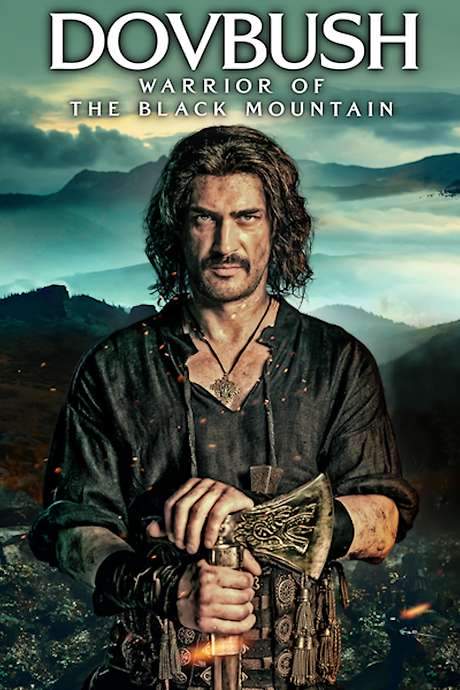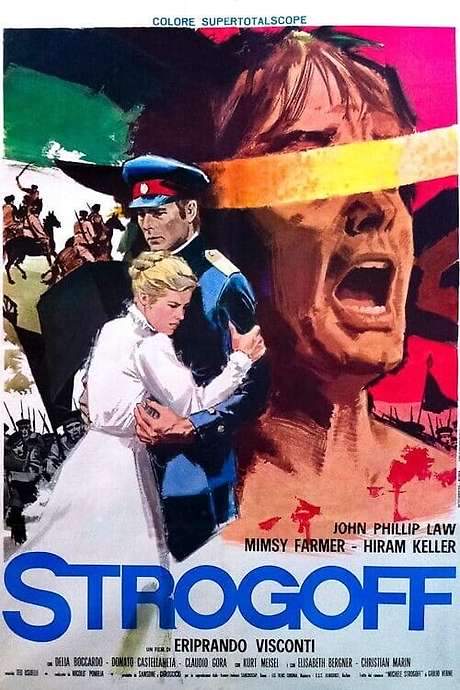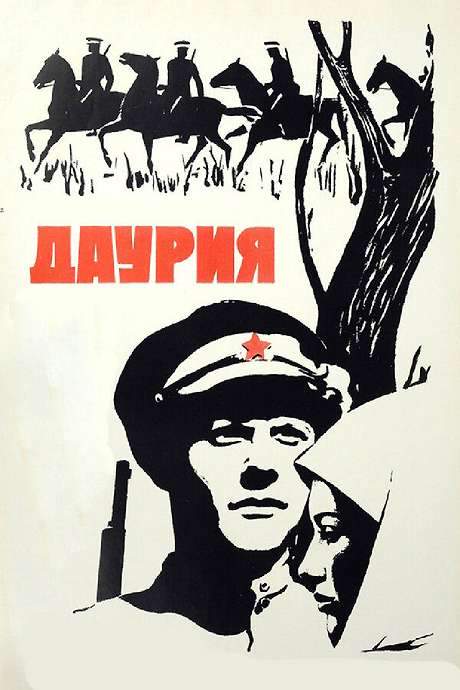
Taras Bulba
Year: 1962
Runtime: 119 mins
Language: English
Director: J. Lee Thompson
Set in 16th‑century Ukraine, the tale follows Andrei, the son of Cossack chieftain Taras Bulba, as he is torn between duty to his people and the love he feels for a Polish woman. Amid the Polish domination of the Cossack steppes, his struggle pits family loyalty against forbidden passion, shaping a dramatic clash of heart and honor.
Warning: spoilers below!
Haven’t seen Taras Bulba yet? This summary contains major spoilers. Bookmark the page, watch the movie, and come back for the full breakdown. If you're ready, scroll on and relive the story!
Taras Bulba (1962) – Full Plot Summary & Ending Explained
Read the complete plot breakdown of Taras Bulba (1962), including all key story events, major twists, and the ending explained in detail. Discover what really happened—and what it all means.
Taras Bulba Yul Brynner is a seasoned Cossack colonel who returns to a Ukraine fractured by constant warfare among Ukrainian, Russian, and Polish fronts, with the Ottoman Empire looming as a distant threat. The Polish authorities tighten their grip on Cossack lands, and the people endure harsh rule while the Cossacks rally in the hills and forests. Taras leads his Brotherhood with a fierce sense of duty, yet the homeland remains divided, its farms burned and its families scattered by a struggle that seems never to end.
Taras’s return to his family introduces a new generation, including his wife Sofia Bulba Ilka Windish and their children. The family life is tempered by the wider conflict, and Taras, along with the other Cossacks, continues to hold the line against Polish domination even as the land itself bears the scars of endless skirmishes. The Cossacks’ courage is tested again when two decades pass and Taras sends his two sons, Andriy Tony Curtis and Ostap Perry Lopez, to Kiev to receive a Polish education. At the academy, Andriy becomes entangled in a forbidden romance with Natalia Dubrov Christine Kaufmann, a Polish princess whose presence stirs resentment among locals who see the Cossacks as outcasts.
Natalia’s status in Kiev puts Andriy and Ostap in a dangerous crossroads. The locals’ hostility toward the Cossacks deepens, and the brothers end up fleeing back to their father’s Ukrainian steppes as tensions rise. When news arrives that the Poles want the Cossacks to rally for a fresh war, Andriy’s refusal to fight for their occupiers triggers a harsh test of courage. The challenge is brutal and symbolic: two riders vault their horses over a daunting chasm, and the fate of the accuser is sealed by a single fall—God’s judgment rendered in the crash below. Taras supports Andriy’s stance, signaling a shift in allegiance and a plan to reclaim Ukraine from Polish dominion.
The Cossack Brotherhood, led by Taras, confronts a split leadership as Iván Mykola (Hetman) urges quiet alliance with the Poles, while Taras insists on a bold course. Ivan Mykola [Daniel Ocko] tries to hold the line, but Taras asks the Brotherhood to choose whom they will follow. They rally to Taras, and with the Holy Banner of St. Michael in hand, he becomes the de facto leader of the Brotherhood. The Cossacks ride out to confront the Poles in the Baltic region, and at Dubno the Poles expect a routine deployment but instead find a brutal, disciplined Cossack assault. The siege begins, and the city’s food runs scarce as disease spreads, turning the siege into a test of endurance for both sides.
Amid the siege, Andriy is drawn toward a desperate bid to rescue Natalia from her fate. He slips into the besieged city in a bid to save her, but she is condemned to be burned for loving a Cossack. To save her life, Andriy proposes a grim compromise: he will lead a raiding party to ferry cattle into the starving city, easing the burden on its people. The siege’s momentum shifts as many Cossacks grow weary of the stalemate and drift home, only to return when Polish strength becomes clear again. The Polish commander renews the assault, and the clash erupts on the field where father and son confront one another in the heat of war.
Taras encounters Andriy on the battlefield and, driven by a controversial sense of justice, ends his son’s life for betrayal. The field becomes a grim stage where loyalties collide, and Taras leads the main Cossack force in a fierce retreat toward the river’s edge. Those who had left the siege to go home rejoin the main army, and a violent surge of horses and riders pushes many men and beasts over the cliff into the river below. The Cossacks, weathered and resolute, press on and finally break the Polish defenses, entering Dubno in triumph.
Andriy’s burial marks a solemn moment in a city now under Cossack control. Taras’s leadership is reaffirmed as a rebuke to those who had oppressed the Cossacks, with a vow that underscores their different path from their Polish rulers. As Taras speaks to his people, he emphasizes restraint and mercy, insisting they will not mirror the cruelty they endured: “We will not ravage. We will not pillage. We will burn out the plague, and open the supply wagons, and feed the people of our city.”
We will not ravage. We will not pillage. We will burn out the plague, and open the supply wagons, and feed the people of our city.
In the aftermath, the Cossacks reclaim Dubno and secure a hard-won sense of autonomy, but the scars of the long struggle linger. The film ends with Taras’s hard-won victory tempered by the personal loss of Andriy, a reminder of the price paid when a homeland’s freedom comes at such a steep personal cost. The tale emphasizes the brutal realities of loyalty, honor, and the cost of rebellion, while anchoring its epic scope in a family saga that spans generations and borders.
Last Updated: October 09, 2025 at 11:08
Unlock the Full Story of Taras Bulba
Don't stop at just watching — explore Taras Bulba in full detail. From the complete plot summary and scene-by-scene timeline to character breakdowns, thematic analysis, and a deep dive into the ending — every page helps you truly understand what Taras Bulba is all about. Plus, discover what's next after the movie.
Taras Bulba Timeline
Track the full timeline of Taras Bulba with every major event arranged chronologically. Perfect for decoding non-linear storytelling, flashbacks, or parallel narratives with a clear scene-by-scene breakdown.

Similar Movies to Taras Bulba
Discover movies like Taras Bulba that share similar genres, themes, and storytelling elements. Whether you’re drawn to the atmosphere, character arcs, or plot structure, these curated recommendations will help you explore more films you’ll love.
Explore More About Movie Taras Bulba
Taras Bulba (1962) Scene-by-Scene Movie Timeline
Taras Bulba (1962) Movie Characters, Themes & Settings
Taras Bulba (1962) Spoiler-Free Summary & Key Flow
Movies Like Taras Bulba – Similar Titles You’ll Enjoy
1612: Chronicles of the Dark Time (2007) Story Summary & Characters
Tsar Ivan the Terrible (1991) Complete Plot Breakdown
Dovbush (2023) Plot Summary & Ending Explained
The Cossacks (1928) Movie Recap & Themes
Bogdan Khmelnitskiy (1941) Complete Plot Breakdown
The Taras Family (1945) Movie Recap & Themes
Strogoff (1970) Plot Summary & Ending Explained
Alexander Nevsky (1938) Plot Summary & Ending Explained
The Soldier and the Lady (1937) Full Summary & Key Details
Michael Strogoff (1956) Plot Summary & Ending Explained
Dauria (1972) Complete Plot Breakdown
Ruslan and Ludmila (1972) Full Movie Breakdown
With Fire and Sword (1999) Full Movie Breakdown
Taras Shevchenko (1951) Film Overview & Timeline
Iron & Blood: The Legend of Taras Bulba (2009) Spoiler-Packed Plot Recap

















